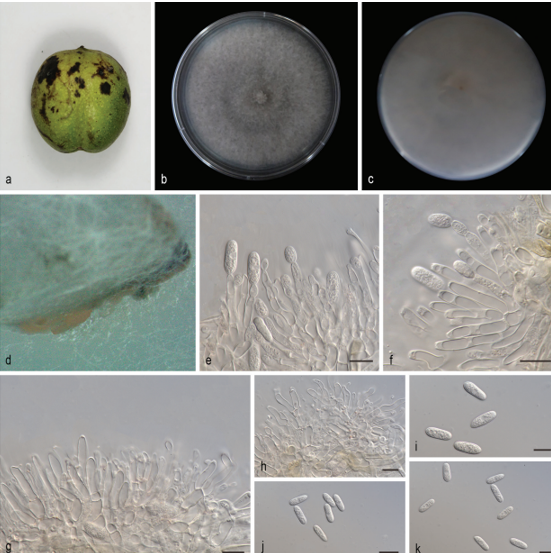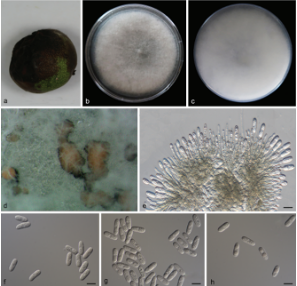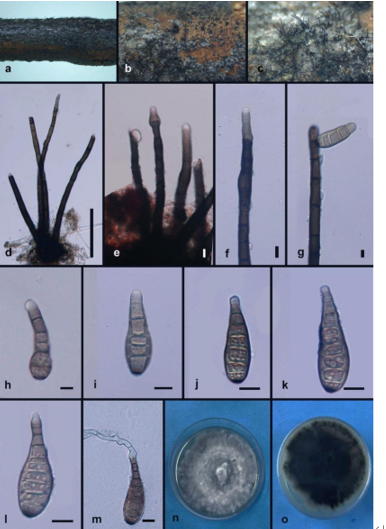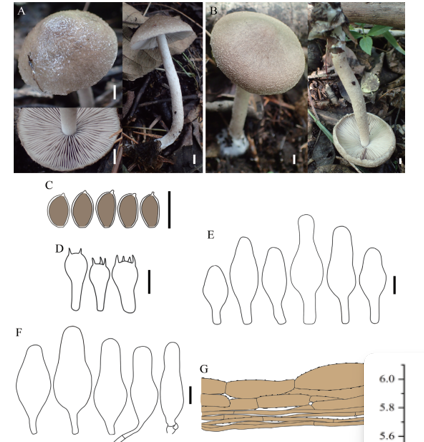Helvella rugosa Q. Zhao & K.D. Hyde, sp. nov. 2020
Index Fungorum number: 551447; Facesoffungi number: FoF00972
Holotype: CHINA, Yunnan Province, Xishan County, Quercus spp. and bamboo forest, alt. 2600 m, 28 August 2009, Qi Zhao 481 (HKAS 75442).
Morphological description
Symbiotic in the coniferous forests of Quercus sp. Sexual morph: Pileus saddle-shaped to three-lobed, 1–2 cm high, 1– 2 cm broad, margin reflexed and fused with stipe, hymenium glabrous, pale to dark grey or greyish brown when fresh, becoming black when dry. Sterile surface wrinkled-folded, white to pale when young, becoming yellowish when dried. Stipe 2–4 cm long, 0.4–0.7 cm broad, tapering downward, mainly longitudinal ribs and few lacunose, glabrous, greyish brown when young, becoming black when dry, white mycelium at base. Medullary excipulum 80–260 μm broad, textura intricata and textura prismatica, hyaline, hyphae 3–5.5 μm broad, enlarged cells 8–15×7–14 μm, walls thickened. Ectal excipulum 50–80μm broad,outermost cells paliform, hyaline, terminal cells 16–40×8–16 μm. Stipitipellis 50–70 μm, hyaline, composed of textura prismatica, terminal cells 18–32×8–18 μm, walls thickened. Asci 220–260×13–17 μm, pleurorhynchous, 8-spored, subcylindrical to clavate, blue in cotton blue. Ascospores [in H2O] (15)15.5–18(18.5)×(9.5)10–11(11.5) μm [(x = 17×10 μm n=40)], ellipsoid, smooth, finely rugose under SEM. Paraphyses filiform, 4–5.5 μm broad, slightly exceeding the asci, brown, with a yellow refractive content in Melzer’s reagent, blue in cotton blue; apex enlarged, 6–8 μm broad. Asexual morph: Undetermined.
Habitat: in the coniferous forests of Quercus sp
Distribution: China
GenBank Accession:
Notes: Helvella rugosa can be easily recognized by its small fruiting body, pale to dark grey or greyish brown hymenium, wrinkled-folded, white to pale sterile surface, and a tapering downward, mainly longitudinal ribs stipe.
Reference: Hiran A. Ariyawansa1,3 & Kevin D. Hyde1,2,3,15 & Subashini C. Jayasiri1,3 et al.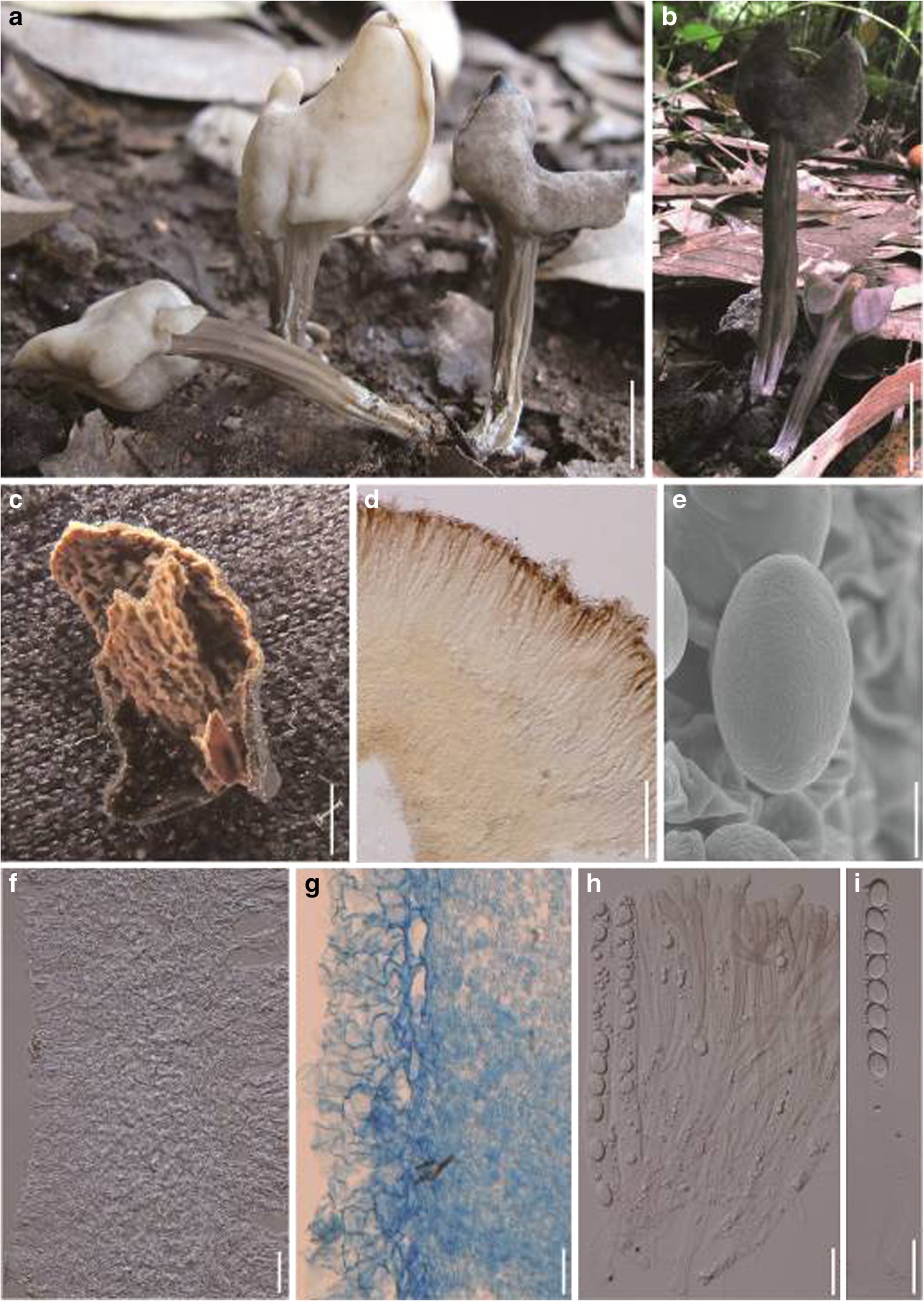
Helvella rugosa (holotype) a, b Typical mature specimensc, f Sterile surface of pileus d Hymenium e Ascospore g Stipitipellis h Asci and paraphyses i Ascus. Scale bars: a–b=1 cm, c=2.5 mm, d=150 μm, e=5 μm, f–i=30 μm


